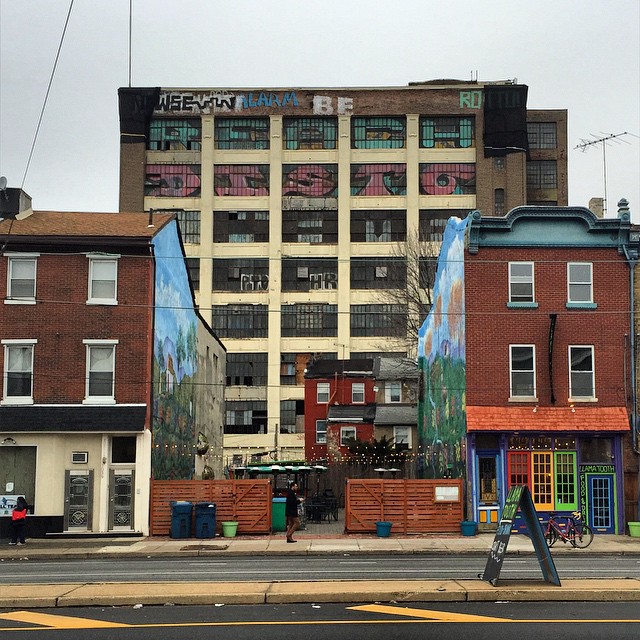
One year ago today, I started a job at the City of Philadelphia Mural Arts Program. At Mural Arts, we have a fundamentally different way of thinking about and creating public art than I’d ever experienced spending time around street art, graffiti, or even mural festivals or programs like The L.I.S.A. Project NYC or The Bushwick Collective. A year inside of “Philadelphia’s community-engagement juggernaut” has taught me a lot. It’s made me fall deeper in love with street art than ever before, and it’s also helped me to better understand the medium’s shortcomings. Here are a few observations:
- Street art’s greatest strength is its ability to be nimble. Gaia made a similar point at an event at the Philadelphia Museum of Art in May, where he described street art in Philadelphia as something that can fill in the cracks that Mural Arts doesn’t reach. April Fools’ Day? Street art is there. Black Lives Matter? Street art is there. Potholes need fixing? Street art is there. Street art gives artists an almost unrivaled opportunity to respond quickly to the world around them, whether that means making work with timely pop culture references or commentary on world events, or being inspired to the architecture and design of the city. The nimbleness of street art is also closely related to its use as a space for experimentation and free(ish) expression. For all those reasons and more, street art is an essential element of a healthy public space.
- Decoration is rarely enough. I love art for arts’ sake as much as the next guy, and sometimes there’s nothing better than seeing a beautiful piece on a cool building and just having your day brightened up a bit. If you really feel like your contribution to the world is to make it a more colorful and exciting place with funny wheatpastes or huge murals at street art festivals, that’s great. Do that. But do that because you believe it makes a contribution to a space, not because you want to paint a bigger mural than the last guy and get more likes on Instagram. If the right crop on a photo means that I can’t tell the difference between your studio work and your street work, you’re probably doing it wrong.
- As we say at Mural Arts, it’s not just about the paint. The most rewarding projects I’ve had a small role in at Mural Arts do things like tell stories about Philadelphia’s history, provide jobs and training for men coming out of the criminal justice system or change the conversation around homelessness and housing insecurity.
- All that is to say that it’s rare for social practice and socially-engaged art making to be combined with strong aesthetics, but when that does happen, there’s an amazing synergy. Swoon‘s work is a great example. For the most part though, street artists and the street art press (myself included) place far too much of a focus on the aesthetics and decor, not enough on truly transformative work. That’s a lot of wasted opportunities, because street art and public art in general can do so much more than just look cool.
- Some projects need institutional support. Institutions can provide the resources, credibility, and access necessary to take a project from good to great, from non-existent to a reality. Open Source is going to be amazing, and most (if not all) of the projects in the exhibition would be impossible for artists to do on their own, even with substantial financial resources.
- Some projects succeed because they don’t have institutional support. Tatyana Fazlalizadeh’s Stop Telling Women to Smile series is powerful in part because it can appear anywhere, and that anonymous bust of Edward Snowden is powerful because it appeared somewhere that the state would never allow. Institutions always come with strings attached (like, for example, not breaking the law or not bringing up certain topics).
- Artists should be paid for their labor. If you cannot pay an artist a fair wage to participate in a project, you should ask why not and seriously consider whether or not the project is worth undertaking at all.
- Certainly not a revelation, but an important reminder: There is an art world outside of the commercial art world, and it is beautiful. The most powerful art in the world is the art that can’t be constrained to an investment portfolio.
Photo by RJ Rushmore
